Drought Exposes Vulnerabilities in California Water Management
California is poorly prepared for another severely dry year.
By Brett Walton
Circle of Blue
SACRAMENTO, Ca. — President Obama is scheduled on Friday to visit Fresno, a big dust-cloaked farm city of 506,000 residents in California’s Central Valley. His mission: promoting $US 20 million in federal drought relief aid. The president’s visit comes four weeks after California Governor Jerry Brown declared a drought emergency on January 17.
The president’s opponents in and outside California, never mind residents in a state accustomed to calamity and the forces of nature, might be compelled to shrug off the emergency declaration and the presidential visit as grand political theater designed to attract attention. That, however, would be more than unwise. It would be dangerous for most of the state’s 38 million residents.
Like the shrinking reservoirs that are exposing antique cars and ghost towns mired in lakebeds, the state’s persistent dry cycle, now in its third year, is pulling back the curtain to reveal striking inadequacies in California’s water management system. By and large, America’s largest economy and most populous state is not prepared for a fourth severely dry year, nor is the state equipped to handle the worst consequences of climate change – the erratic swings from wet to dry and the higher temperatures that will become commonplace.
Measures In Place Enough?
In 2014, just to ease the worst of the steady statewide drying, California will install a variety of measures rarely seen here all at the same time. They include:
- Farmers selling water to other farmers and to cities. The state’s water markets allow supplies to be used by those who produce the most economically valuable goods – generally farmers who grow fruits and nuts, and cities that need extra supplies.
- Conservation, already an important part of state water policy, will be enforced in many areas through mandatory restrictions.
- Potentially record levels of groundwater pumping. Owners and managers of water wells can pump as much as they want because groundwater use is largely unregulated.
But even these measures are not an enduring solution. Worse, some of them make the state more vulnerable in the long run.
Groundwater, for instance, is seen by state authorities and farmers as sufficient to keep the state in business this year. Trouble is, many of California’s aquifers are rapidly losing their water supplies and dropping quickly. Worse is that irrigation districts have little idea how much water the aquifers hold.
Aaron Fukuda, an engineer with Tulare Irrigation District, a water supplier on the eastside of the Central Valley, told Circle of Blue that wells in his district were dropping from 3.6 to 6 meters (12 and 20 feet) annually in recent years.
“We don’t know how much the aquifer can produce,” Fukuda said. “Some people are chasing water down to 1,000 feet (305 meters). We don’t know enough about the aquifer to know how much water is available.”
That is a recipe for trouble in the long-term. The state’s groundwater reserves are already in decline. An increase in pumping will lead to wells soured by saltwater intrusion along the coast where Pacific Ocean water infiltrates depleting freshwater aquifers. Some wells in the interior will go dry. Surface lands atop aggressively pumped aquifers often sink, threatening the structural integrity of key pieces of water transport infrastructure – especially the canals that move water hundreds of miles uphill through the Central Valley, home to half the state’s irrigated farmland.
What is necessary now are changes to state water policies that make the next record-setting drought easier to bear, argues Lester Snow, executive director of the California Water Foundation and a former director of the California Department of Water Resources.
Droughts Prompt Policy Changes
There is precedent for signal changes in policy. Past water crises were used to usher in new conservation policies. After a record drought in the 1970s, for instance, lawmakers passed strict efficiency standards for showerheads, toilets, and washing machines, a move that along with changes in landscaping and pricing helped cut water demand in urban areas. A more recent bill, passed in 2009, requires a 20 percent per capita reduction in urban water use by 2020.
For Snow, a top priority now is helping the more than 400 local and state water agencies, a mind-boggling tangle, collaborate on the next generation of water infrastructure – facilities that treat and reuse water from storm drains and sewage plants and store it underground where it will prop up flagging aquifers. Policy changes are also needed, he says, particularly for groundwater.
“In general, our natural resource reality is changing faster than water management structures can adapt,” Snow told Circle of Blue. “Obviously I’m referring to climate change. California’s fragmented management system can’t keep up. We don’t have the structures in place to deal with more weather extremes.”
Just last week, Californians were reminded about their state’s volatile weather patterns. A high pressure system in place for more than a year lifted, and a ribbon of moist tropical air soaked parts of the state. The Pineapple Express storm dumped more than 10 inches of precipitation over the central Sierra Nevada and more than doubled the snowpack. But it did not break the drought. Snowpack is still only 28 percent of normal and key reservoirs are one-third of capacity.
The Smallest Are the Most Vulnerable
Geography and bureaucratic complexity make California a difficult state for generalizations. Superimposed on the U.S. East Coast, the state would stretch from Connecticut to Georgia. Each of its hundreds of water agencies have a different mix of supplies – aquifers and rivers, local sources and those imported from distance basins – which expose them to unique pressures.
Farmers and urban residents place vastly different demands on the system. More than three-quarters of the state’s water goes to agriculture.
With six weeks of winter remaining, the water supply forecast is still in flux. A big storm or two could boost reserves, but not by much. What is clear now, though, is that little water will be available from the two big water transport canal projects: the state-operated State Water Project and the federally-operated Central Valley Project.
Both move water from Sierra snowfall-fed reservoirs in the north to farms and cities in the south. The only water that will flow in the canals this year, state authorities project, is a piddling amount of surplus water from last year. Unless massive storms arrive soon, no additional releases are likely to come.
This does not mean immediate catastrophe for the entire state. Southern California, for one, is in decent shape. Reservoirs there are full and the big irrigation districts will get an undiminished supply from the Colorado River. Having recognized the perils of relying on remote snowpack, cities in Southern California are cutting ties with water imports and developing local sources, either by cleaning up and reusing wastewater, building new reservoirs, or taking the salt out of seawater and producing desalinated fresh drinking water.
“Large urban utilities have done a lot of investing in making themselves less vulnerable,” Ellen Hanak, a senior fellow at the Public Policy Institute of California, told Circle of Blue. “They have made efficiency investments. They have also diversified their supply sources and increased their storage capacity.”
Small communities, however, are more vulnerable. The state lists 17 water systems that are at risk of running out of water in the next 60 to 100 days. All serve fewer than 11,000 people.
Lompico County Water District, 20 kilometers (12 miles) north of Santa Cruz, is one of the systems on the list. Lois Henry, the water board president, told Circle of Blue that the district asked the 1,200 people it serves to cut back their use by 30 percent. Water levels in the district’s three wells are dropping and Lompico Creek, the backup supply, is too low to pump. Henry hopes to get a grant from the state for an emergency connection to a nearby water system.
“But let’s face it,” Henry said, “they’re suffering from the drought too. They have their own customers to take care of.”
Food Prices and Farmworkers
California grows a large share of the nation’s fruits and vegetables, but experts do not anticipate large national price increases due to the drought. Prices for fruits and vegetables may creep up a few percentage points, but it is far too early to say with any certainty what the market will be, said Richard Volpe, who tracks food prices for the U.S. Department of Agriculture Economic Research Service.
Dan Sumner, a professor of agricultural and resource economics at the University of California, Davis, agreed. “Food prices are not a major issue,” Sumner told Circle of Blue. “The things that we grow uniquely, like lettuce and strawberries, we grow on the coast, where we pump groundwater to keep farming.”
Sumner said the most vulnerable people during the drought are the farmworkers in the Central Valley, a fertile belt of land that is one of the poorest regions of the United States. Of the 17 metropolitan areas in the United States with the highest unemployment rates, nine are in the Central Valley, all with rates above 10 percent.
“People there are on the margin now,” Sumner said. “There are families that are really struggling.”
Lacking water, widespread farmland fallowing is expected in the valley, up to 200,000 acres in the largest water district, Westlands. Without work, families may be forced to move, straining the state’s social resources.
“There could be migration out of the Central Valley to the cities,” said Gary Libecap, an economist at the University of California, Santa Barbara. “It’s just like closing a big auto plant. And California does not have the safety net to deal with that.”
Brett writes about agriculture, energy, infrastructure, and the politics and economics of water in the United States. He also writes the Federal Water Tap, Circle of Blue’s weekly digest of U.S. government water news. He is the winner of two Society of Environmental Journalists reporting awards, one of the top honors in American environmental journalism: first place for explanatory reporting for a series on septic system pollution in the United States(2016) and third place for beat reporting in a small market (2014). He received the Sierra Club’s Distinguished Service Award in 2018. Brett lives in Seattle, where he hikes the mountains and bakes pies. Contact Brett Walton



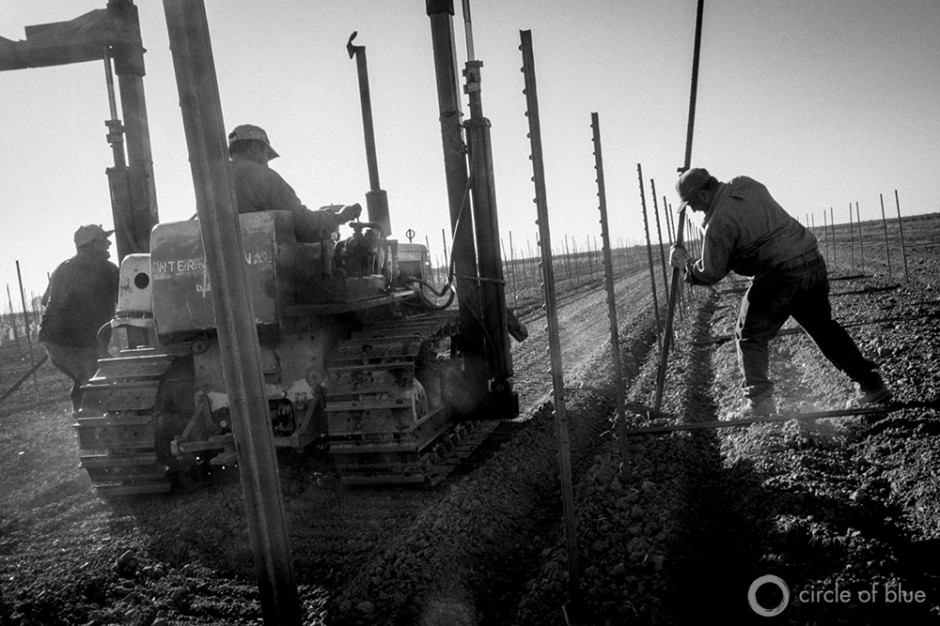



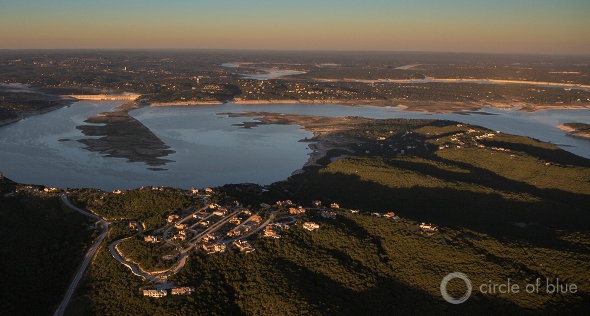
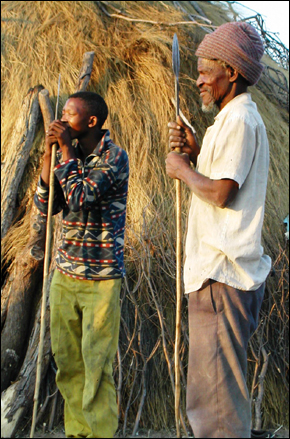


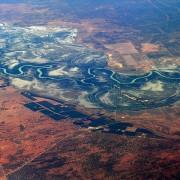



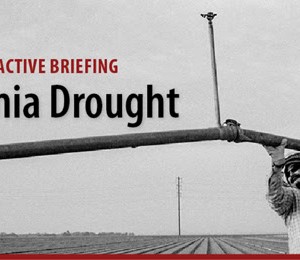
What prevents frackers from getting water from farmers?